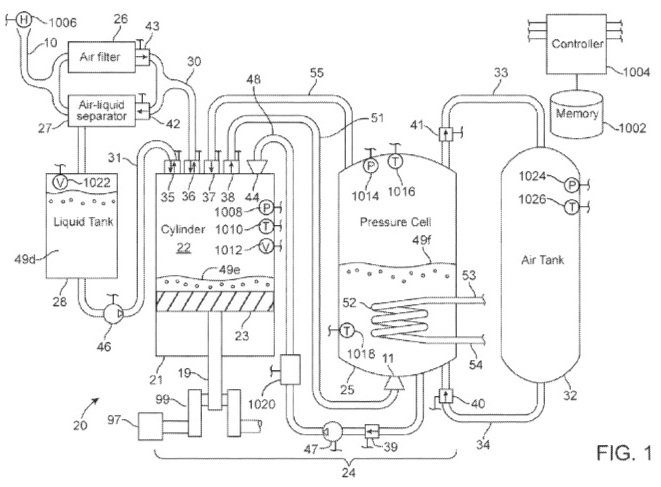Lightsail hibernates – another setback for thermo-mechanical energy storage
January 28, 2018.
Recently there has been another blow for thermo-mechanical energy storage, and in particular adiabatic CAES, as Lightsail - the much hyped company bankrolled by Bill Gates - has entered "hibernation". This appears to be due to running out of cash, with the company ceasing operations. This is can be added to list of failures in CAES, including SustainX and ApexCAES.

Lightsail's concept - the $70 million idea
Many have watched the company with interest given its hype, larger than life founder and large amounts of investor funding - sources indicate this exceeded $70 million. Their various claims of high thermodynamic efficiencies which had already been achieved were also interesting - although it is hard to tell from the little available information whether this was simply a result of including the compression heat in their calculations (if you are interested in compressor performance you typically only consider the difference in air enthalpy between compressor inlet and outlet). As such, a little skepticism regarding this is probably healthy, which is emphasized by the company's switch from CAES system to high pressure storage container manufacturer. Their water-spray injected compressor was an interesting idea, but was probably difficult to manufacture in practice. Moisture in compressed air can cause many problems including corrosion, aiding the build up of sludge deposits by mixing with oil/dust and as a result increasing pipe pressure losses, and causing faults in sensor and control equipment to name just a few issues off the top of my head. Crucially, it must also have been very difficult to avoid freezing during their expansion process, and water droplets/icicles in fast moving machinery can also be incredibly damaging. I should also note that their patent does also refer to oil spray injection.
Lightsail's move to high pressure container storage manufacturer suggests an element of desperation to me and suggests that the management realised that they had completely underestimated the scale of the ACAES challenge - indeed a review from a former employee on glassdoor quotes the Cons of working at Lightsail as "Large scale energy storage is NOT an easy problem to solve"! The high pressure storage tank is probably the only part of the ACAES system that actually exists off-the-shelf, which throws up questions of why this would be the component of choice to manufacture. I have discussed in previous posts my opinion that it is most certainly a misconception to think that a ACAES system can be constructed with 'off-the-shelf' components. The primary reason would seem to be that they thought they could implement a marked reduction in container costs compared to leading manufacturers, and a recognition that building high pressure vessels was certainly possible, as these type of containers do exist and have a market. This would have potentially allowed them to make incremental scientific progress and make a better or cheaper version of a product that already exists rather than the more ambitious aim of a game-changing energy storage technology. The problem with this turned out to be that they couldn't make a product that was enough of an improvement to ship many orders.
It is very difficult to work out exactly what went on at Lightsail - I would love to talk to someone who worked there as I'm sure they were full of talented employees. There were also various reports about questionable spending habits on behalf of the senior management - again a look on glassdoor also suggests this.
In any case, it's a huge shame for thermo-mechanical energy storage, and what's most frustrating is that there is almost no ability for anyone to learn from the technical failures that undoubtedly sank the company. Picking through the Lightsail patents (now owned by the Silicon Valley Bank) is difficult, and they just seem to be full of quite generic ideas, with no indication of any ingenuity in the designs. This reinforces why these early stage companies are so frustrating, and can ultimately be bad for the technology development, as they simply put-off would be investors while no new scientific knowledge can be gained. Maybe I will email Bill Gates and see if he can push for any knowledge to be made public...